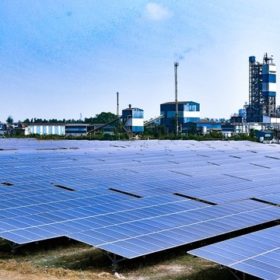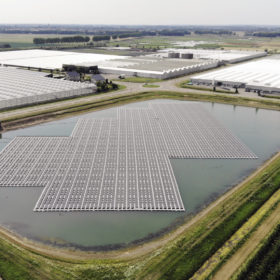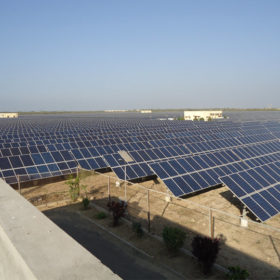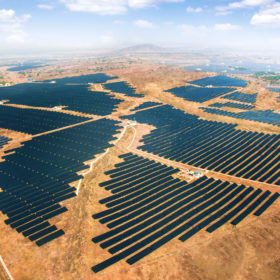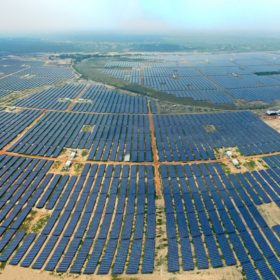DST to fund trans-national research in digitalization for green energy transition
February 17 is the last date to submit proposals targeting implementation, adaption, and knowledge creation of digital solutions in energy systems and networks. The projects will be funded by the Department of Science and Technology, under India’s Ministry of Science and Technology.
NHDC tenders 25 MW floating solar EPC work in Madhya Pradesh
The project—to be set up in captive mode—will come up at Omkareshwar reservoir as two units of 13 MW and 12 MW capacity. The generated power will be used, through Narmada Valley Development Authority, for pumps of various irrigation and multipurpose projects.
6.4 GW solar auction concludes with lowest price of INR 2.47/kWh
The Andhra Pradesh solar auction was oversubscribed by 8.5 GW, but the final prices are significantly higher than the INR 1.99-2.00/kWh record-low tariffs discovered in recent auctions.
Ladakh to host 10 GW hybrid renewable power projects
Work is underway for the installation of 10 GW hybrid renewable power projects in the Indian Union Territory of Ladakh. Land identification and preparation of a detailed project report (DPR) for the necessary transmission infrastructure have already begun.
CSIR-CMERI develops solar-biodiesel powered mini-grid
The renewables-powered mini-grid with 50kW peak system capacity was recently installed at the residential colony of the institute’s Center for Excellence in Farm Machinery (CoEFM) in Punjab. It uses solar trees of different capacities and biodiesel-run generators to provide uninterrupted power.
NTPC tenders for 735 MW solar project in Rajasthan
Bidders have until February 22 to lodge their interest to develop the PV capacity that shall come up in three blocks of 245 MW each at Nokh Solar Park.
Union budget: Customs duty rise for solar inverters but modules spared
Imported solar inverters and lanterns will get costlier, as the union budget for the next fiscal year has proposed customs duty increases from 5%, for both items, to 20% and 15%, respectively. The budget, which also incentivizes Indian manufacturing of solar project components whilst giving a helping hand to raw materials, makes no mention of solar cells or panels.
Uttar Pradesh tenders for 275 MW grid-connected solar
Global bids are invited to build 275 MW of grid-connected solar capacity in Uttar Pradesh Solar Park. The projects are to be set up on a build-own-operate basis. The tariff ceiling is fixed at INR 3.25/kWh for the 25-year power purchase agreement duration.
Adani Green commissions 100 MW solar capacity in Uttar Pradesh
The solar capacity—comprising two plants of 50 MW each—were completed ahead of schedule despite adverse conditions amidst Covid-19. The plants benefit from 25-year power purchase agreements with Uttar Pradesh Power Corporation Limited, at INR 3.22/kWh and INR 3.19/kWh, respectively.
Electric vehicle transition presents US$266-billion investment opportunity this decade
A new report by government thinktank NITI Aayog and Rocky Mountain Institute (RMI) identifies financing as one of the hurdles for India’s electric mobility transition. It proposes solutions to lower the cost and increase finance for electric vehicles in the nation.

